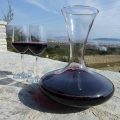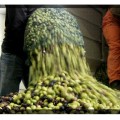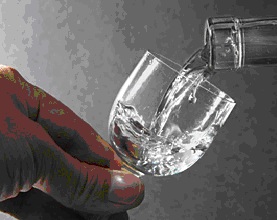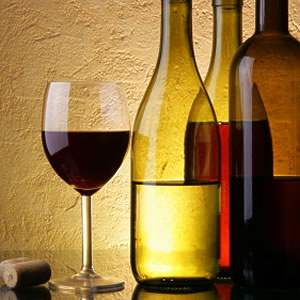
Croatian Wines
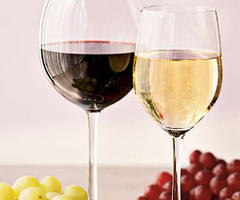 Many of us enjoy a glass of wine on a daily basis and many of us would like to have more opportunities to try out new varieties of wines – correction, of grapes. A friend of mine instructed me that there are no varieties of wines, but grapes. This is obviously a common mistake made by a non-connoisseur but merely an enjoyer of this nectar of gods. This reference is a strong marketing point and if you ever wondered about the origin of it then you should read the Greek mythology (if you hadn’t already). According to ancient myths, the wine was an important part of religious festivals and it was believed to have magical powers. God knows what they did with it, but they loved it so much that they even assigned a divine being to represent it – the famous bad boy Dionysus, the Greek God of Wine. They (the old Greeks and perhaps some new ones too) believed that when you drink red wine you are getting in touch with the spirit of Dionysus, which is another great marketing point. Romans had their counterpart in the form of god Bacchus. From the way we see it; the Greeks and Romans have slightly exaggerated with the consumption of wine, but what we liked about it is the fact that no other alcoholic beverage has never come near the pedestal that wine enjoys. Whether you want it to complement your meals or to celebrate an important occasion, wine is a truly remarkable supplement and if you enjoy it responsibly, it might be one of the best things life has thrown in your way.
Many of us enjoy a glass of wine on a daily basis and many of us would like to have more opportunities to try out new varieties of wines – correction, of grapes. A friend of mine instructed me that there are no varieties of wines, but grapes. This is obviously a common mistake made by a non-connoisseur but merely an enjoyer of this nectar of gods. This reference is a strong marketing point and if you ever wondered about the origin of it then you should read the Greek mythology (if you hadn’t already). According to ancient myths, the wine was an important part of religious festivals and it was believed to have magical powers. God knows what they did with it, but they loved it so much that they even assigned a divine being to represent it – the famous bad boy Dionysus, the Greek God of Wine. They (the old Greeks and perhaps some new ones too) believed that when you drink red wine you are getting in touch with the spirit of Dionysus, which is another great marketing point. Romans had their counterpart in the form of god Bacchus. From the way we see it; the Greeks and Romans have slightly exaggerated with the consumption of wine, but what we liked about it is the fact that no other alcoholic beverage has never come near the pedestal that wine enjoys. Whether you want it to complement your meals or to celebrate an important occasion, wine is a truly remarkable supplement and if you enjoy it responsibly, it might be one of the best things life has thrown in your way.
And now for the exploration of this divine nectar – being one of the most popular alcoholic beverages and one of the most important components of many European and Mediterranean cuisines and cultures, the wine in Croatia shares a similar importance of the one in Greece and Italy (besides the mythological one). The wines of Croatia have a long history but are only beginning to show their full glory to the world.
In order to fully understand the heritage and quality of Croatian wines, firstly we must explain the background of wine. Wine is the product of complete or partial fermentation of fresh grapes. It contains different concentrations of alcohol (9-15 vol%) and it also contains a number of mineral components, mainly sodium and magnesium salts. About 400 other substances can be traced in wine, but their nutritional value is pretty low. Besides that, it is rich in vitamins of group B, especially B2 and B3. Wines can be made from other fruits, such as berries or apples and in that case they are named after the fruit – apple wine, for example. These wines are called fruit wines. You have probably heard of sake, which is surprisingly a wine – a rice wine, and is made from starch-based materials so it resembles spirits more than wine and is commonly mistaken for a spirit. To be more exact now that we’ve mentioned sake, the process of its production is more similar to that of a beer brewing. Thus, we could say that sake is a rice brew than a wine.
Archeologist have found evidence that the earliest known production of wine took place 8,000 years ago in Europe, in a country now called Georgia. Other notable historical mentions of wine production were those from Armenia and of course, Greece.
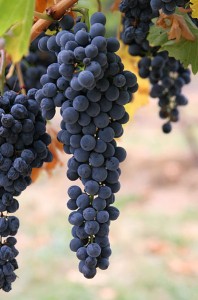 Most of us have heard about Pinot Noir or Merlot or Chardonnay, but the fact that not many of us knew, until now, is that these are varieties of the European species Vitis vinifera (also known as Common Grape Vine). Now you can easily impress someone with this fact. If a wine producer uses one of these varieties as dominant one (75% or 85% which is defined by the law) the wine will be varietal. On the other side, there are blended wines, which combine different varieties. If you thought that blended wines are of a less quality, then you were wrong, because some of the most expensive wines are blended.
Most of us have heard about Pinot Noir or Merlot or Chardonnay, but the fact that not many of us knew, until now, is that these are varieties of the European species Vitis vinifera (also known as Common Grape Vine). Now you can easily impress someone with this fact. If a wine producer uses one of these varieties as dominant one (75% or 85% which is defined by the law) the wine will be varietal. On the other side, there are blended wines, which combine different varieties. If you thought that blended wines are of a less quality, then you were wrong, because some of the most expensive wines are blended.
Varieties of wine grape represent only a small part of more than 600 kinds of grapes. Each variety has its own unique combination of characteristics such as color, size, skin thickness, acidity, yield per vine and flavors. Although there is a large number of these varieties, only a few them are suitable for production of quality wine. Furthermore, if we want to fully use the potential of these few varieties they must be matched with the right micro-climate and winemaking techniques.
As for the classification of wine, regulations say that European wines are usually classified by the region from which they come from, for example Bordeaux or Chianti, while other wines are most often classifies by the variety of grape, such as Merlot or Pinot Noir. However, more wine producers felt that this was unnecessary restriction and now we have some non-European wines labeled and classified by the region.
Once you get your hands on the bottle of fine wine, first thing you’ll want to do is to taste it. Wine tasting means that we will allow our taste sensors to examine and evaluate it. While doing it, we will recognize the sweetness of wine for example, which is determined by the amount of the residual sugar from the grapes after fermentation. If we taste the dryness of wine that means that there is only a small amount of residual sugar left in it.
Moreover, if we recognise the taste of chocolate or coffee that means two things – first, that we are experienced tasters and second, that the wine we are tasting was aging in oak casks. So, not only there are flavors that characterise specific variety of grape but also flavors that are result of other numerous factors of the process of wine production. In case you recognise banana flavour in wine, that doesn’t mean that banana was added in, the taste comes from yeast metabolism and it resembles bananas.
Aroma of the wine comes from volatile compounds in the wine which are released into the air and this is the reason why people twirl the wine glass – to speed up vaporization of these compounds and by doing that they enhance the aroma. This is also the reason why we serve red wines at the room temperatures. Of course, every rule has its’ exceptions, so does this one – if you are drinking highly aromatic wine, such as Beaujolais, perhaps you will prefer it served chilled, as many people do.
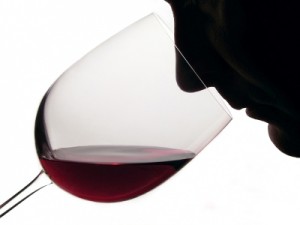 Now that we know where it comes from, we should write something about how it is made. The process of winemaking is also known as vinification. Of course, everything starts with the selection of proper grapes, while the final step is bottling and storing the bottles in proper manner. There are two categories in wine production and each of them has different products known as wine on one hand and sparkling wine on the other hand or in other words – still wine production and sparkling wine production. The later one includes carbonation. There is a whole science world around wine and its production and we know it by the name of oenology.
Now that we know where it comes from, we should write something about how it is made. The process of winemaking is also known as vinification. Of course, everything starts with the selection of proper grapes, while the final step is bottling and storing the bottles in proper manner. There are two categories in wine production and each of them has different products known as wine on one hand and sparkling wine on the other hand or in other words – still wine production and sparkling wine production. The later one includes carbonation. There is a whole science world around wine and its production and we know it by the name of oenology.
Once the grapes have been harvested they are taken into a winery and prepared for the first ferment. At this stage important things happen – red wine making separates from the white wine making. The red color from the red wine comes from the pulp of red or black grapes and they undergo fermentation process all together, meaning that grape skins are not removed like in process of white wine making. White wine is made by fermenting only juice that comes from pressed grapes. The skins are removed at this process and are no longer used. Naturally, rosé wine is made from red grapes by simply allowing it to stay in contact with the skin for a certain amount of time to pick up some of the skins color. There is one more way to make rosé and that is to mix red and white wine.
Fermentation begins when the yeast is added to the grapes and it usually takes between one and two weeks for the process to be over. The role of the yeast in the process of fermentation is to convert the sugars from the grape to the alcohol ethanol and carbon dioxide. The second fermentation is bacterial fermentation and it converts malic acid to lactic acid. This is necessary because it decreases the acid and softens the taste, so the wine can be drinkable.
Once these processes are over the wine is transferred into barrels (oak barrels for example) where it needs to stay for a certain period of time in order to mature. The time from harvest of the grapes to actual consumption of the wine can vary from a few months to over twenty years. We often hear how wine is better the longer it matures, however, only 10% or red wines and 5% of white wines will taste better. Many factors are included into this process and at the end it really depends on the wine maker – what grape will he use, will he omit or combine some steps to achieve the desired result. We could say that most of the quality really comes from the variety of the grapes used and not necessarily from the process of making the wine.
 All things said, we are good to continue this review (hopefully this is the right word for this text!) of Croatian wines and to discuss the indigenous Croatian grape varieties and wines. It is found that in Croatia there are one hundred native varieties of grapes, but the trend of disappearance is ongoing. It takes a favorable geographical position and climate conditions for the preservation and expansion of grape varieties and wine growers are the ones who need to take action in this direction in order to preserve the varieties. Numoerous discussions were held on this topic and the conclusions were headed into direction of wineries connecting more strongly with the gastronomy and etnoturizam to maintain the success of it.
All things said, we are good to continue this review (hopefully this is the right word for this text!) of Croatian wines and to discuss the indigenous Croatian grape varieties and wines. It is found that in Croatia there are one hundred native varieties of grapes, but the trend of disappearance is ongoing. It takes a favorable geographical position and climate conditions for the preservation and expansion of grape varieties and wine growers are the ones who need to take action in this direction in order to preserve the varieties. Numoerous discussions were held on this topic and the conclusions were headed into direction of wineries connecting more strongly with the gastronomy and etnoturizam to maintain the success of it.
The winemaking traditions in Croatian region go way back before the Roman Empire. If you remember the beginning of this text, it was actually the Romans who brought significant scale and methodology to the production of grapes in the world. Minding the vicinity and the fact that Croatia was once part of the Roman Empire it is no wonder that Croatian wines have picked up some of their craft. Of course this is only one of the many factors. As it happens to be, Croatia has some of the best oak forests in the world which is favoured by many winemakers in Europe. If you add some very interesting indigenous varieties of Croatian grapes then you got the recipe for top notch Croatian wine.
If we follow the wine regions of Croatia then we will learn that it is divided into two regions: the continental and maritime, which are again subdivided into a total of 12 sub-regions. Each of them is distinguished by geographic, topographic, geological, agro ecological, economic and other distinctiveness’s. These divisions are solely due to the different climate zones that affect the variety, quality and production of the final product thereby making the Croatian wine production so rich and so different from all others. It is a real rarity to encounter on such a small space so many diverse varieties of grape and types of wine. Let’s not forget that Croatia is situated on geographic area that has many sun hours, especially in Dalmatia.
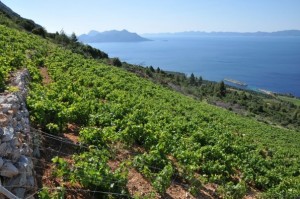 The main division is on the continental and maritime winegrowing regions. In continental areas of Croatia there are the north-western part (Plješivica, Prigorje and Varazdin, Međimurje, Pokuplje and Moslavina) and north-eastern (Slavonia and Danube). Coastal part includes Istria and Croatian Littoral, northern Dalmatia, Dalmatian Zagora, central and southern Dalmatia. There are four hundred registered producers of wine in Croatia, and the market counts almost a thousand wine labels.
The main division is on the continental and maritime winegrowing regions. In continental areas of Croatia there are the north-western part (Plješivica, Prigorje and Varazdin, Međimurje, Pokuplje and Moslavina) and north-eastern (Slavonia and Danube). Coastal part includes Istria and Croatian Littoral, northern Dalmatia, Dalmatian Zagora, central and southern Dalmatia. There are four hundred registered producers of wine in Croatia, and the market counts almost a thousand wine labels.
In the northwest of the Croatia mostly Riesling, Rhine Riesling, Chardonnay, Moslavac and Škrlet (in Moslavina), Kraljevina, White and Grey Pinot are produced. Among the best known manufacturers in this region are: Agromeđimurje Inc. from Čakovec, Varaždinka d.d. from Varaždin, Petrač d.o.o. from Krapinske Spa, Bojan Štampar and Alojz Novak, and many manufacturers from Štrigova.
The north-eastern Croatia also produces Graševina, then Sylvaner, Riesling, Chardonnay, Pinot Blanc and Grey, Gewurztraminer, Sauvignon Blanc, Frankovka and Zweigelt. The most famous Slavonian producers are Ivan Enjingi, who owns one of the largest vineyards in Croatia and Davor and Višnja Zdjelarević from Brodski Stupnik, who achieved recognition at the international market. The famous winery Krauthaker operates in Kutjevo. Erdutski Vineyards has a huge barrel capacity of 75 000 liters.
Istria and Croatian Littoral are leaders in producing top quality wines such as Malvasia, Merlot, Cabernet Sauvignon, Teran, Refok, White and Grey Pinot, Chardonnay, Muscat, trojšćina (Susak) and Vrbnička žlahtina (Krk). Winery Kozlović from Momjan has a long tradition in the production of Malvasia, Muscat and Terran, and in recent years winery Katunar came to scene with Žlahtina and production of red and sparkling wines.
Dalmatia is rich with authentic grape varieties. The most famous wines are: Babic and Plavina (Primosten), Merlot (Drniš), Debit, Pošip maraština and Grk (Korčula), Vugava white and Black plavac (Vis), Pumice and Bogdanuša (Hvar), Plavac mali (Pelješac), desert wine Prošek, and the world’s famous premium red wine, Dingač. There is a story about Debit which is very old variety and the story comes from the times when Napoleon Bonaparte ruled in this area in the late 18th century. Napoleon was demanding the payment of taxes and as people in Dalmatia were poor but had this fine wine, they were paying their taxes to Napoleon in Debit.
Famous wineries in Dalmatia are: Winery Plančić from Hvar amd winery Toreta from Korčula, which breed authentic varieties Pošip and Rukatac. Plenković winery annually produces approximately 300 000 bottles of Golden Plavac and Golden Rose. On the Pelješac there are wineyards of Skaramuča family, known for production of Plavac mali and Dingač.
In Dalmatia, the Greeks and Romans first began to cultivate grapes, while the Croats continued and advanced it. The entire history of Dalmatia is closely associated with the production of wine – literary, artistic, economic and even political history. Winemaking represents the main branch of production in Dalmatia, half the rural population is engaged in breeding grapes. Grape processing is performed in modern cellars and wineries. Dalmatian wines are among the highest quality due to the abundance of rocky soil and their many days of sun.
When you start to enjoy these marvelous Croatian wines remember to taste them properly, to include all your senses in order to fully enjoy them.
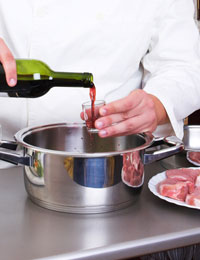 Wine cannot taste as it should if you cannot smell it. You can test this if you hold your breath and take a sip of it. This does not mean that your mouth and tong do not perform well but they need to collaborate with other sensors to fully experience the taste of wine. Your taste buds play an important role in determining the strength and texture of the wine and your nose contributes to that taste by adding the smell. To do this properly you need to take a sip and then gargle the wine around your mouth. At this stage you can either swallow or spit out the wine. Or, you can still try something that usually professional tasters do – slightly open your mouth and let some air in.
Wine cannot taste as it should if you cannot smell it. You can test this if you hold your breath and take a sip of it. This does not mean that your mouth and tong do not perform well but they need to collaborate with other sensors to fully experience the taste of wine. Your taste buds play an important role in determining the strength and texture of the wine and your nose contributes to that taste by adding the smell. To do this properly you need to take a sip and then gargle the wine around your mouth. At this stage you can either swallow or spit out the wine. Or, you can still try something that usually professional tasters do – slightly open your mouth and let some air in.
The purpose of all this is to ventilate the wine and inhale volatile substances then travel to the back of the mouth where your olfactory nerve is located from which the impulses are sent to the brain. Once again, if you refer to the beginning of this article, you will remember the explanation of the volatile substances.
Once you’ve tasted and “felt the wine,” and then swallowed or spit it out try to think what other aspects of taste there are and how long have they stayed in. Length and finish and the taste that remains in the mouth, are a key indicator of the quality of each wine. The more the taste is felt in your mouth and nose and the more pleasant it is, the better the wine is.
Consumed in small quantities wine can evoke the feelings of joy. The cells of the nervous system are stimulated providing a sense of security and strength. Reflexes are slightly reduced also. If you continue to drink more we all know what happens next.
When consumed in small quantities, the wine has a positive effect on the body: it raises levels of good cholesterol in the blood. Alcohol stimulates an enzyme whose activity leads to an increase in HDL cholesterol (high density cholesterol), which is not harmful to the organism. Finally, the wine stimulates digestion because its acidity provides the highest digestibility of protein (meat, cheese, eggs). The acid contained in wine is similar to that found in gastric juice. This is one of the reasons why wine is such an infallible addition to many cuisines and meals.
Nutritionists recommend only half a cup per serving, for example, a cup for lunch or dinner. It is not recommended to drink wine as an aperitif. Drinking wine on an empty stomach has a negative effect on the liver, which contains enzymes that can digest the alcohol, converting it into acetic acid, a substance which your body uses in the same way as sugar, and causes a feeling of hunger.
Women absorb ethanol faster than men do – that means they intoxicate faster! Moderate consumption of wine is considered to be 70 grams of ethanol (or one liter of low alcoholic wine) a week, which corresponds to one deciliter of wine a day, although most nutritionists believe that the moderate consumption may be as twice as mentioned amount of wine (one deciliter of wine with lunch and one with dinner).
Wine is an important component of the Mediterranean diet, particularly red wine that is drunk diluted with water – which is called bevanda in Dalmatia. In these areas the overall mortality and mortality caused by cardiovascular disease is less than in areas where wine is not consumed.
Most credit for the health effects of wine goes to the polyphenols, especially resveratrol, a group of organic compounds that, in the mode of action, are considered antioxidants. It has been shown that resveratrol, a natural ingredient of fruit (mulberry, peanut), grapes and wine, is up to ten times more abundant into red wines(about 5 mg / l) compared to whites, and is responsible for reducing the risk of various diseases, mostly cardiovascular .
Given that each wine has a special feature that complements the flavor of certain foods in preparation or as a drink, certain rules have gradually emerged about which wine is best with a particular dish, so you should consider them when buying your wine.
Equally important is to keep the wine at a suitable temperature, which is usually the ideal temperature for serving. Red (red) wines are served at a temperature of 18-20 ° C, white at 10-12 ° C and the champagne at 5-6 ° C.
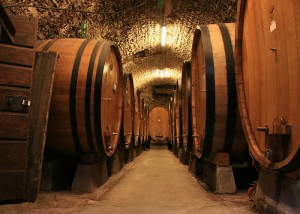 Writing this article has only enhanced our love for the wines. We use them a lot, especially for cooking. If you plan to get your hands on some delicious Croatian wines and show of your culinary abilities, then have this in mind: there are a few general rules about the use of wine in food preparation. Wines must be clean and free of rough taste. Red wines are added to the stew, dishes of beef and venison, stewed fish, marinades and different sauces. Also, they can be used in desserts, the strawberry marinades, or cooking peaches and pears. Very white wine is usually added to the pasta because it loses strength while cooking and baking.
Writing this article has only enhanced our love for the wines. We use them a lot, especially for cooking. If you plan to get your hands on some delicious Croatian wines and show of your culinary abilities, then have this in mind: there are a few general rules about the use of wine in food preparation. Wines must be clean and free of rough taste. Red wines are added to the stew, dishes of beef and venison, stewed fish, marinades and different sauces. Also, they can be used in desserts, the strawberry marinades, or cooking peaches and pears. Very white wine is usually added to the pasta because it loses strength while cooking and baking.
Prosecco, Port, Madeira and Marsala are dessert wines. Prosecco is used in preparation of the wine marinade, sauce dishes in beef and poultry. Porto is used when preparing meals from ducks and pasty, while Madeira is combined with pork, beef and mushrooms. Marsala is fine with the veal and other light meats in sauces. Dessert wines are also used in the preparation of desserts such as cream, jam, soufflés and sugar syrup cooked fruit.
Judging by the exceptional response and reaction there is a definite interest in Croatian wines. Croatian wine makers must be smart, creative and act strategically. They have good wines, and now it’s up to them to promote the wines properly. Croatia is in great location, the wine yards have the one of the most beautiful places in the world to grow at and regarding the indigenous grape varieties, they can offer something unique to the world.
When buying top quality wines the price determines the quality in many cases, however, bare in mind to look for the label that says “vrhunsko vino” which defines the top quality wine in Croatia. Once you try them you will agree that they are certainly some of the best. And refreshingly, they are quite unique in character. If you have enjoyed many wines so far but still not Croatian ones then give your taste buds the opportunity to take a spin on completely new varieties like Posip or Plavac Mali or Terran from Istria. These are a real treat. The diversity of the Croatian wines alone would be enough as far as some of us are concerned, however, the excellence and uniqueness of Croatian wines makes us confident to recommend them to you.
Thanks to Moreno on his insight on Croatian Wine and Wine making


